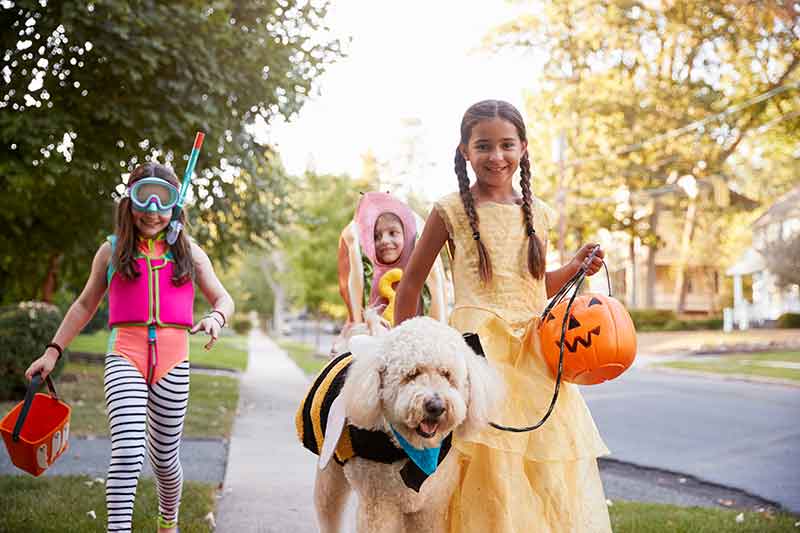
Halloween is just around the corner, and besides carving pumpkins and picking out the perfect costume, plenty of candy is likely on the agenda for kids and grownups alike. Chances are good that the family pet is also highly interested in these seasonal goodies, but the dangers associated with sweets far outweigh the benefits.
Keeping candy and pets separate on Halloween – and all year long – should be a top priority in every home.
Candy and Pets
All candy and sweets have the potential to negatively affect our pets, but some pose more of a threat than others.
- Chocolate – When it comes to toxic people foods, chocolate is one of the worst offenders. The level of toxicity varies depending on the amount and type consumed (dark or baker’s chocolate is more toxic than milk chocolate) and the size of the pet. Watch for signs of chocolate toxicity, such as lethargy, vomiting, diarrhea, increased thirst, agitation, and increased heart rate.
- Xylitol – This popular sugar substitute is commonly found in sugar-free gum, candy, baked goods, peanut butter, vitamins, toothpaste, and other personal care products. It’s highly toxic to pets and can cause a life-threatening drop in blood sugar. It can also lead to kidney failure if not treated promptly. Symptoms include weakness or collapse, trembling, seizures, vomiting, and lethargy.
- Raisins – Usually considered a healthy treat, raisins can be quite toxic to pets. Even small amounts of raisins or grapes can cause kidney failure. These foods should always be stored out of your pet’s reach.
- Overindulgence – Even if the candy being consumed is “safe,” too many sweets can result in tummy troubles or, in severe cases, pancreatitis (a potentially life-threatening inflammatory condition). Call us at once if your pet shows signs of pancreatitis, which can include diarrhea, lethargy, swollen abdomen, or signs of pain.
- Wrappers – It’s rare that a pet will bother to remove the wrapper before devouring a piece of candy. Unfortunately, eating wrappers can lead to dangerous intestinal obstructions which may require surgery to correct. Call us or bring your pet in immediately if you notice vomiting, loss of appetite, or straining/inability to defecate or urinate.
The Best Protection
As with most of life’s problems, prevention is always the best line of defense. Keeping your pet from getting into the candy is as simple as making sure your stash is stored securely out of reach and that your pet is properly supervised. Keep that bowl of goodies stored up high or in a cupboard or closet. Ask your own little ghosts and goblins to dump out the evening’s haul on the kitchen table rather than the living room rug.
Your friends at West Park Animal Hospital want to wish you and your pet a safe and happy Howl-o-ween! Please don’t hesitate to contact us if you have any questions or concerns about candy and pets.
The post Halloween Candy and Pets: A Scary Combination appeared first on West Park Animal Hospital Blog.

